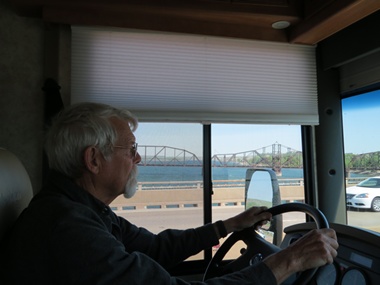
2016-05-18: Missouri
It's always fun to cross the big rivers in the United States. Here in South Dakota, we are crossing the Missouri.
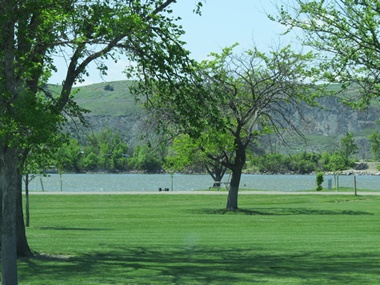
2016-05-19: Farm Island Park
Al found us a great city park in Pierre (the locals pronounce it "peer"), the state capitol of South Dakota. The park is on the Missouri River and although we couldn't get lakeside property, we can see the water out our front window.
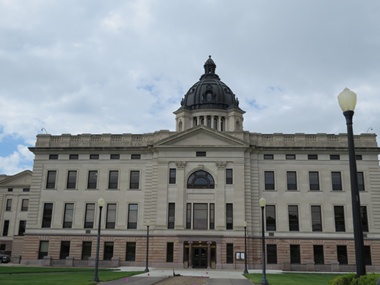
2016-05-19: State Capitol
Since Pierre is the capitol city, we decided a visit to the state capitol was in order. The building was completed in 1910 using the same plans as were used for the Montana capitol. It features a rotunda that is 96-feet tall and beautiful Victorian leaded stained glass. The building was constructed using native field stone, Indiana limestone and Vermont and Italian marble.

2016-05-19: Marble Stairway
This beautiful marble stairway took us to the second floor.
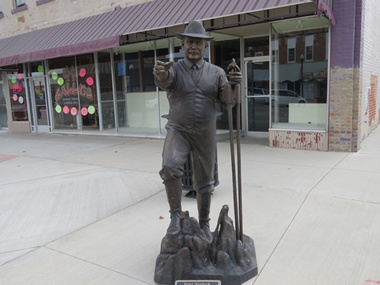
2016-05-19: Bronzes
As we wandered around historical downtown, we found bronzes of various South Dakota governors. This is Peter Norbeck who was the 9th governor of the state.

2016-05-19: Snow Sign
I just couldn't resist taking a picture of this sign. I guess when it starts to snow, you have to go out with your ruler so you know when to move your car!
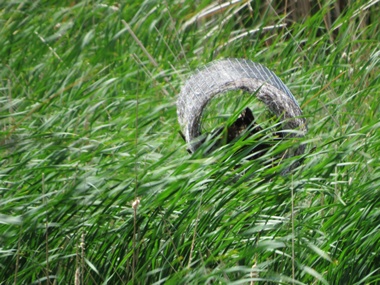
2016-05-20: Nesting Box
We were intrigued with these nesting boxes since we had never seen anything like it. We know the birds like them since there were already built nests inside.
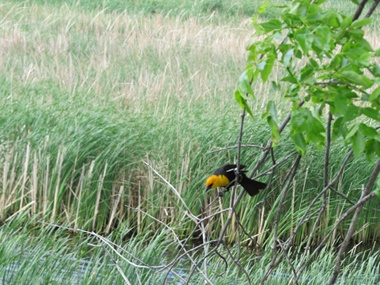
2016-05-20: Yellow Headed Blackbird
It was so much fun watching this yellow headed blackbird flitting around catching insects as he went. These beautiful bright yellow birds gave color to the area around us.
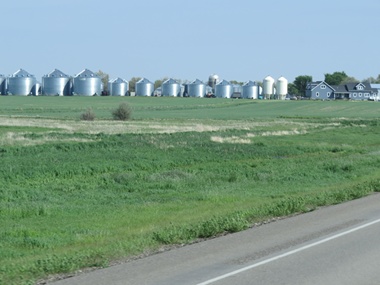
2016-05-21: Grainery
Driving from South to North Dakota we saw many of these huge installations. We were wondering what is stored inside and the capacity. I suppose these are questions that we'll never get answered but it's fun to wonder.
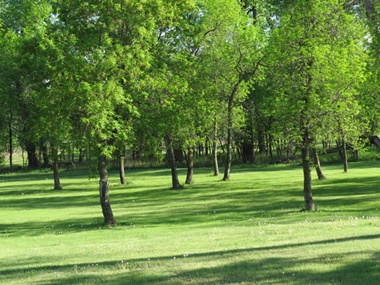
2016-05-21: Sibley Park
This is our window view for the next few days. We are staying at General Sibley Park, a Bismark, North Dakota city park. We're amazed how large the park is and how beautiful.
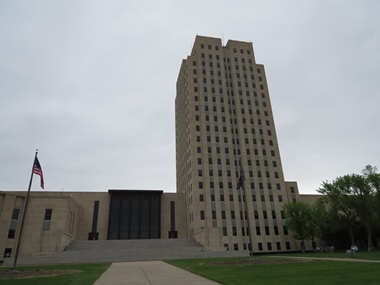
2016-05-22: North Dakota State Capitol
We were very disappointed when we saw the State Capitol here in Bismark. It's a skyscraper that looks more like an office building than a state capitol. It was Sunday so we didn't get to see the inside so perhaps we're not being fair.
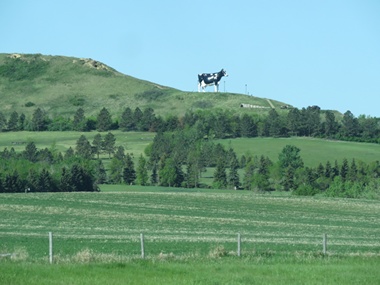
2016-05-23: Salem Sue
Driving through New Salem, North Dakota we got to see Salem Sue, the world's largest holstein cow. She is a 38-foot high, 50-foot long fiberglass cow that was built in 1974 for $40,000 to honor the local dairy farming industry.
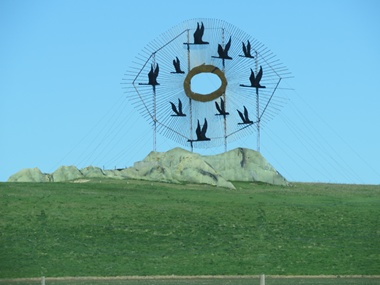
2016-05-23: Geese In Flight
When we came across this huge sculpture, we began to think that everything is big in North Dakota. Along the Enchanted Highway one finds a collection of the world's largest scrap metal sculptures. Local artist Gary Greff conceived this ongoing project in 1989 and continues to maintain it as well as add more. Geese In Flight stands 110-feet tall, is 154-feet wide and weighs 157,659 pounds. The sun burst is made of over 300 lengths of well pipe and there is more than 4.4 miles of weld holding the sculpture together.
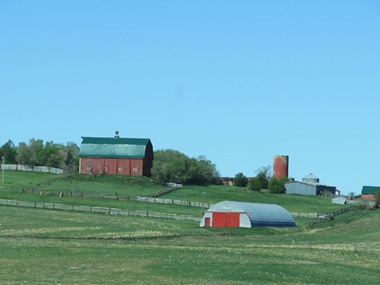
2016-05-23: Farm
We have seen some really beautiful farms so I just had to include one on here.
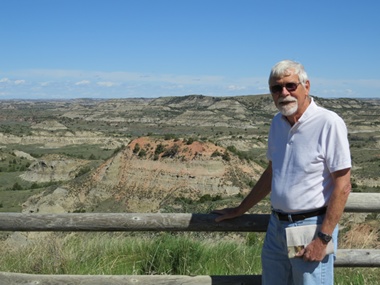
2016-05-23: Painted Canyon
We stopped at the visitor center/rest stop before reaching Madora and were pleasantly surprised to find Painted Canyon. This canyon is part of Theodore Roosevelt National Park and stretches as far as the eye can see into the rugged North Dakota Badlands. We did see bison down on the floor of the canyon and as we turned to go back to the motorhome, there in front of us was a huge bison!
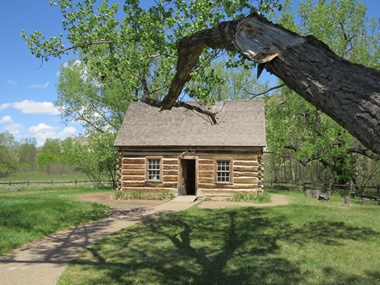
2016-05-23: Maltese Cross Ranch
This was Theodore Roosevelt's first cabin the the Dakota Territory. It was used by him before he became President. Roosevelt took refuge here after he lost both his wife and mother in 1884. He became depressed and retreated to this area where he went further north up the Missouri and constructed his new Elkhorn Ranch cabin. In 1901, at the dawn of the 20th century, Theodore Roosevelt became the nation's 26th President and ultimately one of its greatest conservationists. He later said, "I would not have been President had it not been for my experience in North Dakota."
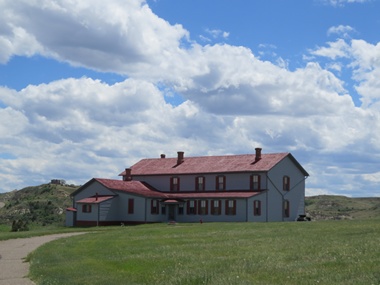
2016-05-23: Chateau de Mores
The Chateau de Mores is an historic home built by the Marquis de Mores in 1883 as a hunting lodge and summer home for his family and guests. The Marquis was a French entrepreneur who came to the Dakota badlands to establish a new kind of cattle operation. He planned to slaughter and cold pack his cattle and ship it east in refrigerated rail cars. The slaughterhouse was built in the town which the Marquis founded and named for his wife, Medora.
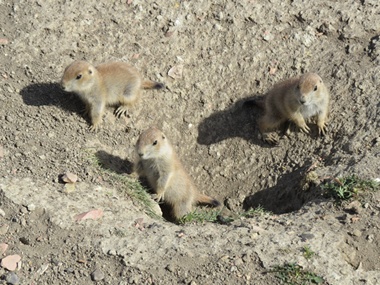
2016-05-24: Prairie Dog Town
Today was our day to drive the loop in the South Unit of Theodore Roosevelt National Park. Our first wildlife sighting was at a prairie dog town. It was so much fun watching these cute little creatures skittering around, popping in and out of their holes and watching us!
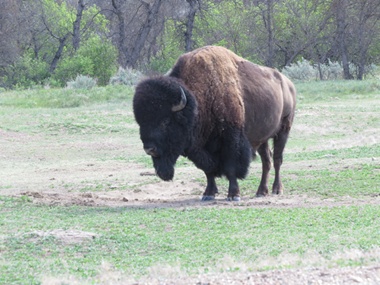
2016-05-24: Bison
The American bison or buffalo, is the largest mammal on the North American continent. The South unit of Theodore Roosevelt National Park is home to somewhere between 200-400 of these magnificent creatures.
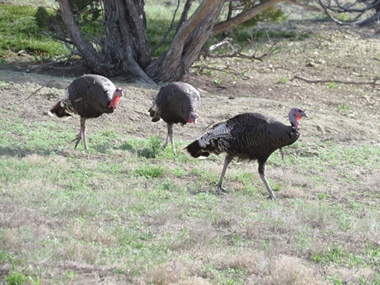
2016-05-24: Wild Turkey
We saw several flocks of wild turkey...
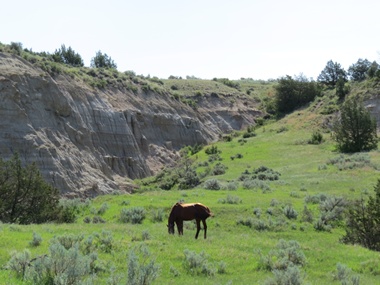
2016-05-24: Wild Horse
...and majestic wild horses.
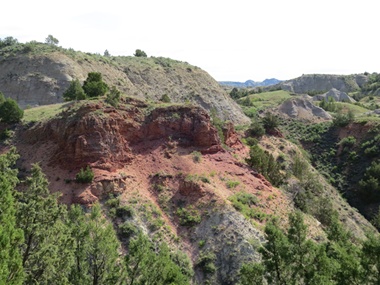
2016-05-24: Canyon
The canyon views were absolutely breath taking with their hoodoos and colors.
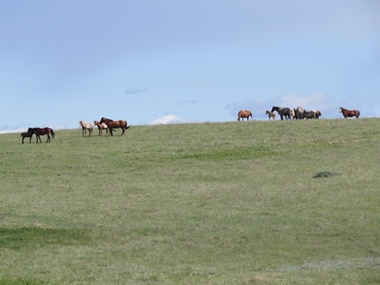
2016-05-24: Bands of Horses
Driving through the park we were lucky enough to see many bands of wild horses. According to what Theodore Roosevelt wrote, there were feral horses in this area. Some horses in the park do bear a striking resemblance to the horses common in this area during the 1800s. As depicted in drawings and early photographs, local horses of that era were typically large-headed, short-backed, and a bit larger than the mustang of the southern Plains. They were often blue or red roans, many having "bald" (white) faces and patches of white on their sides. This color pattern, called an "apron," may be familiar from the paintings of Frederic Remington and C.M. Russell, but is seldom seen in modern horses.
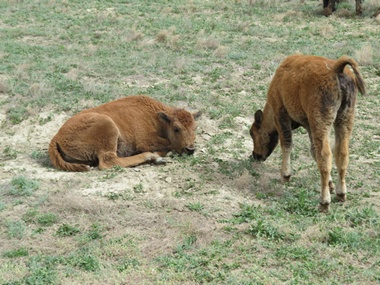
2016-05-24: Calves
Since it is spring, we got to see many baby bison calves. It's hard to imagine that these cute little guys will grow up to be a huge bison.
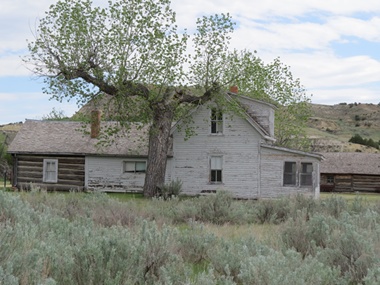
2016-05-24: Peaceful Valley Ranch
Peaceful Valley Ranch is an enduring reminder of the open range cattle ranching era of the 1880s and the golden age of dude ranches. Although several structures on the site have come and gone, and the ranch house has been expanded and renovated throughout its life, the ranch property is remarkably intact and a rare reminder of the architecture of the period in which it was built.